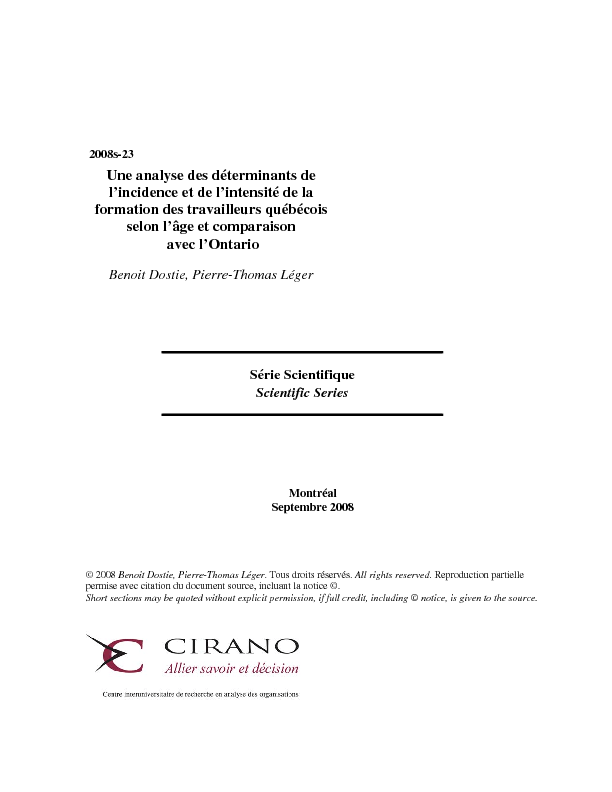Une analyse des déterminants de l'incidence et de l'intensité de la formation des travailleurs québécois selon l'âge et comparaison avec l'Ontario
In this report, we examine whether the proportion of workers who receive training (and whether the training duration) varies with age in Quebec and Ontario using data from the Workplace and Employee Survey from 1999-2004. In general, we find that the probability that a worker receives training begins to fall significantly at the age 55 and this for both classroom and on-the-job training. For example, for both types of training, the probability that a worker between the ages of 55 and 59 receives training is 9 percentage points lower than that of a worker between the ages of 35 and 44. For a worker aged between 60 and 64, the differential is 19.6 percentage points. We obtain similar results when studying the duration of training. At the provincial level, we find that the incidence of classroom training decreases faster with age in Québec than in Ontario.
[ - ]




